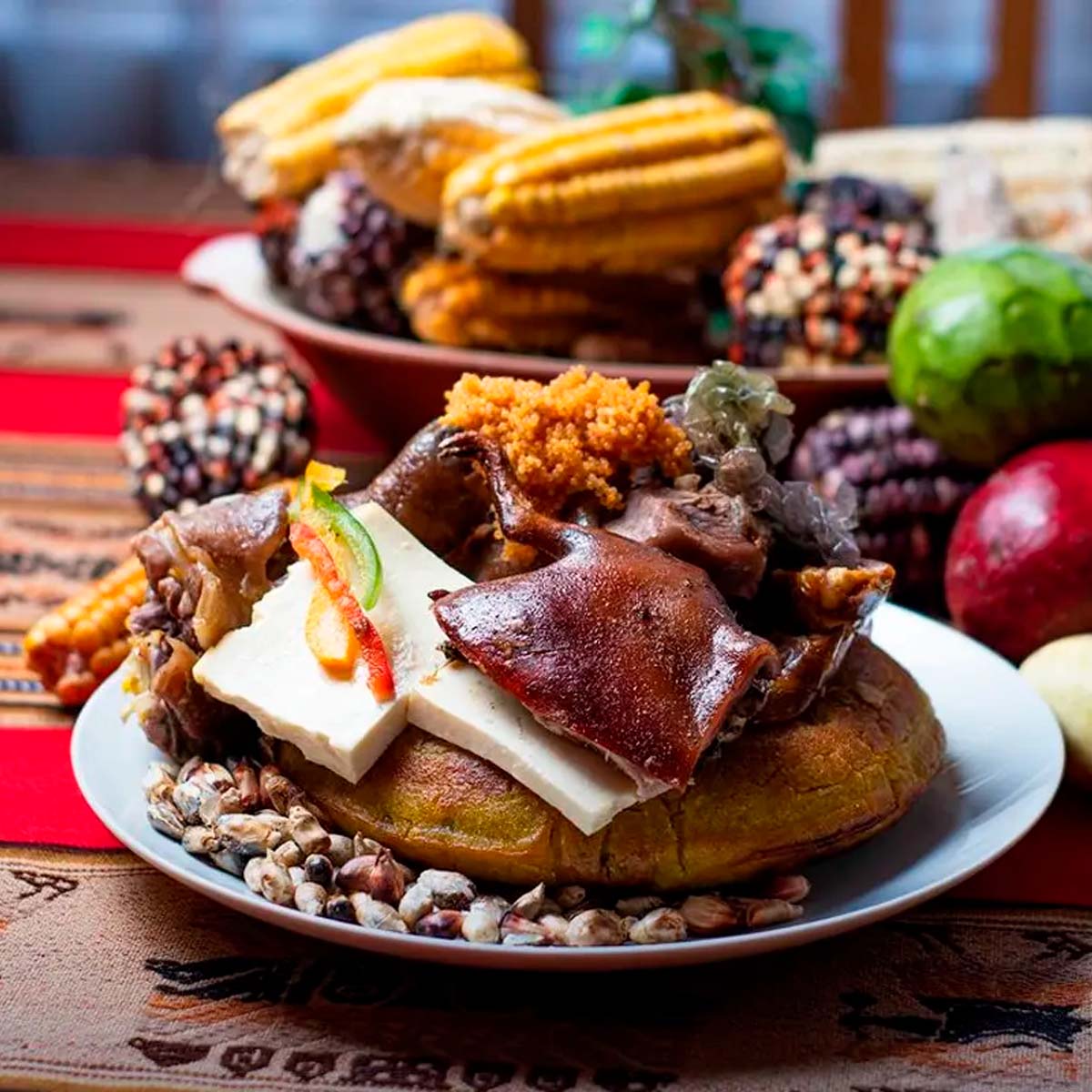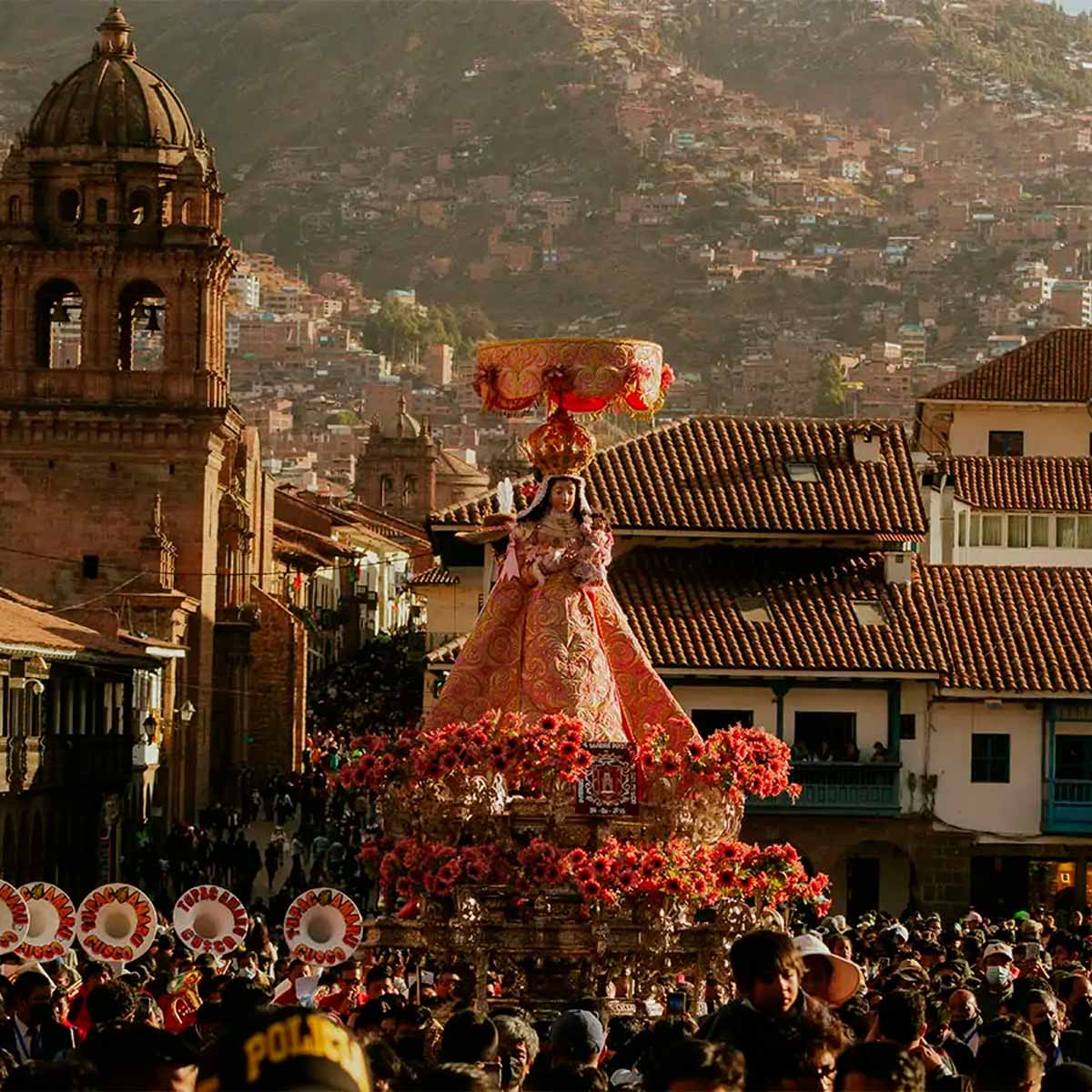
Corpus Christi Cusco is one of the most important religious and cultural festivals on the city's annual calendar. The festival attracts thousands of national and international visitors each year, who are eager to see this unique display of faith and culture.
For the year 2026, the main celebration of Corpus Christi 2026 Cusco will take place on Thursday, June 4th. This date, which changes every year as it is calculated 60 days after Easter Sunday, traditionally marks the beginning of Cusco's jubilee month, a time of intense celebrations that ends with the Inti Raymi. The Corpus Christi 2026 is a key part of the festivities in Peru.
The main event of Corpus Christi Cusco 2026 is the procession of fifteen images of patron saints and virgins from the different parishes of the city. These richly decorated images are carried on platforms from their churches to the Cusco Cathedral, where they stay for one week. The procession in the Plaza de Armas is a spectacle full of color, music from local bands, and folk dances, which reflects the devotion and cultural identity of the people of Cusco.
The origins of Corpus Christi in Cusco go back to a process of religious mixing started during the Spanish conquest. In Inca times, one of the most important celebrations was the Inti Raymi (Festival of the Sun), which matched the winter solstice. During this festival, the mummies (mallquis) of the Sapa Incas and other noble ancestors were taken out in procession through the main square, as a form of worship and connection with the past.
With the arrival of the Spanish and the imposition of Catholicism, the colonial authorities sought to end the Andean religious practices. Following the guidelines of the Council of Trent, which promoted the festival of Corpus Christi (created to celebrate the Eucharist), an opportunity was seen to place the Catholic celebration on top of the important Inca procession.
In 1572, Viceroy Francisco de Toledo, as part of his efforts to strengthen Spanish rule and stop idol worship, formally ordered that the procession of Inca mummies be replaced by a procession of Catholic images. It was established that the patron saints and virgins of the main parishes of Cusco would come out on platforms (andas) for the Corpus Christi celebration. In this way, the Catholic festival was put into the local calendar, taking advantage of the pre-existing tradition of massive processions, giving origin to the current form of the celebration.
The date of Corpus Christi is not fixed, as it is set by the Catholic liturgical calendar. The main celebration always takes place on a Thursday, exactly nine weeks after Holy Thursday (or 60 days after Easter Sunday).
For the year 2026, the main celebration of Corpus Christi in Cusco will take place on Thursday, June 4. It is important to remember that, although the central day is Thursday, the festivities in Cusco usually extend for several days, including the "entrada" of the saints the day before and the "octava" one week later.
The celebration of Corpus Christi in Cusco extends beyond the central day (Thursday). It begins the day before and continues for a week.
The images stay inside the Cathedral for seven days. On the eighth day after the central day (the following Thursday), the "Octave of Corpus" is celebrated. On this date, the images come out in procession around the Plaza de Armas again before beginning the return to their respective parishes, marking the end of the main festivity. During the week that the images stay in the Cathedral, popular beliefs are created about the "meetings" and "dialogs" between the saints and virgins.
 |  |  |
The people in charge carry their saint or virgin out of the Cathedral Basilica, and the procession begins. The Main Square fills with people, and the excitement of seeing this procession is palpable. The order in which the saints appear is as follows:
Our Lady of the Immaculate Conception, also called "La Linda" from the Basilica of the Cathedral
The stewards, without distinction, distribute gifts to those attending during the procession, handing out items such as postcards, souvenirs, etc. The procession ends at approximately 5:00 p.m., after all the saints return to the Cathedral, where they will remain until the following Thursday, when the faithful, the stewards, the mayor, and others return their saints to the temple from which they came.
The traditional dish for this festival is Chiriuchu, a cold and spicy dish exquisite for discerning palates. It is a mixture of 10 ingredients such as: baked guinea pig, cau cau (fish roe), boiled chicken, cured meat, qochayuyo (seaweed), chorizo, white corn, cheese, sliced rocoto (roasted corn), and the typical French toast. This fluffy toast is a combination of ingredients such as corn, squash, and a little chicken broth during preparation to give it a distinctive flavor when served.
According to some accounts, its creation dates back to the time of the Incas, specifically the Aynis, a system of family reciprocity. At the end of the workday, the best of each house was shared, creating a mixture of foods from different sectors, thus creating a delicious banquet.
An interesting fact is that this dish represents the duality of the Inca world, because it was presented as an offering to the Sun God, a warm being. It was meant to be eaten cold, and coincidentally, this is where its Quechua name comes from: chiri = cold, and uchu = food, translating it as "cold food."
Beyond the majesty of Machu Picchu, the surroundings of Cusco offer a variety of experiences that allow you to get to know the culture, history, and landscapes of Andean Peru up close. From traditional towns to little-explored natural wonders, there is a lot to discover just a few kilometers from the imperial city. If you are looking for new adventures outside the usual, here we present the places you can't miss: